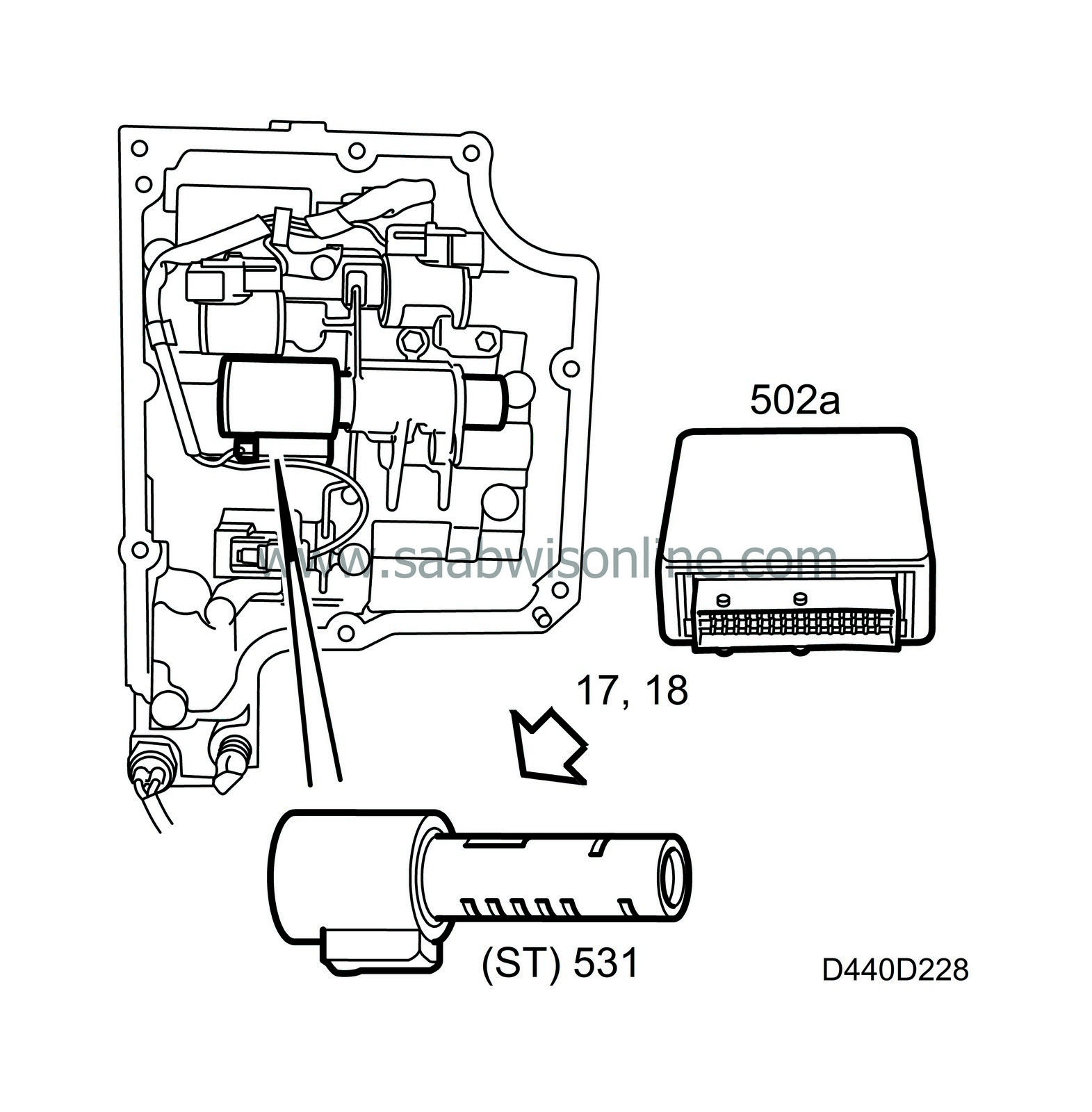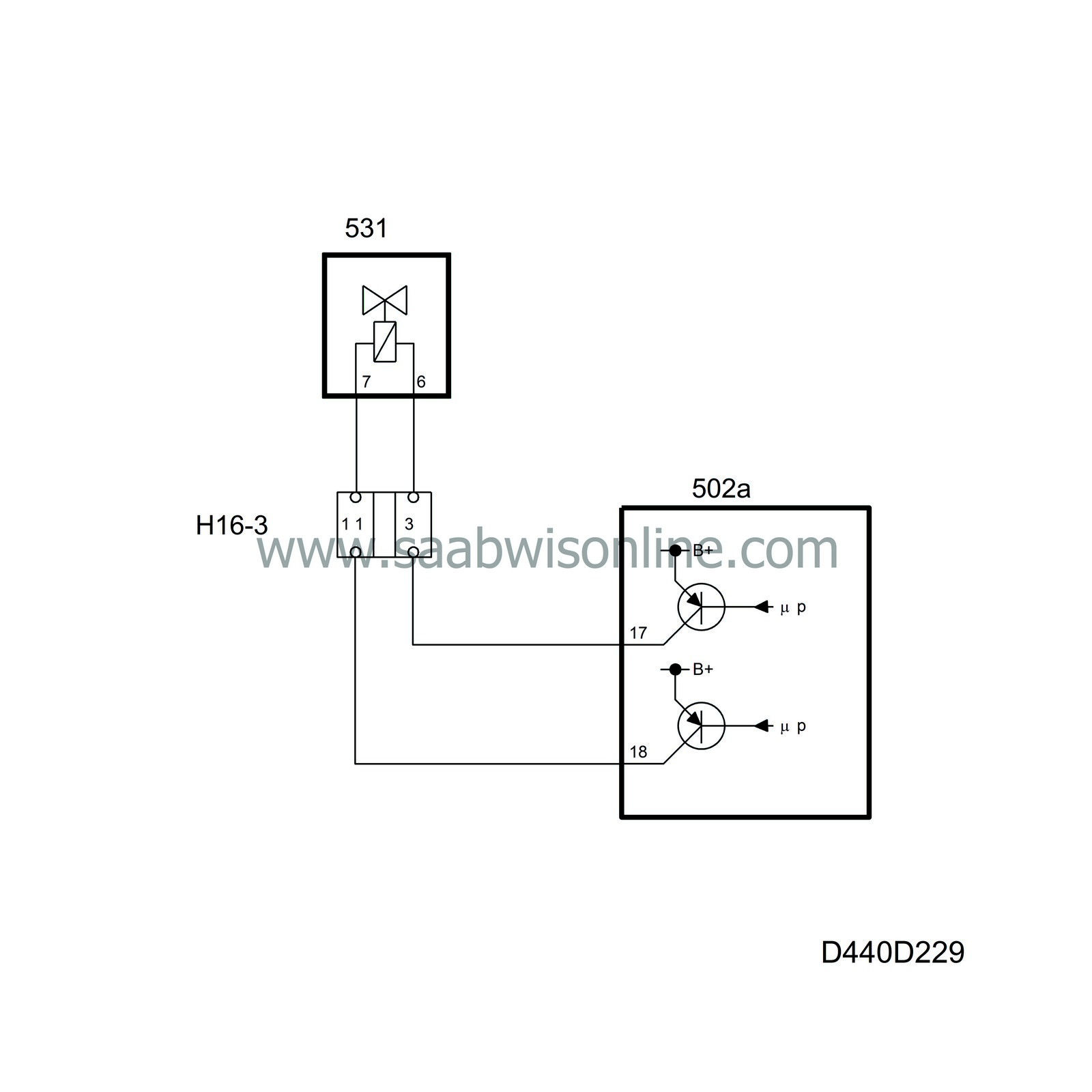Solenoid valve ST, for system pressure
| Solenoid valve ST, for system pressure |
Solenoid valve ST is located in the valve housing which is mounted on the transmission casing. The solenoid regulates the automatic transmission's system pressure.
The solenoid is controlled by a 300 Hz PWM signal via control module pin 17 and is grounded via pin 18. It is controlled by the varying current that is the result of the prevailing pulse ratio. When the pulse ratio is high, i.e. high current strength (approx. 1 A), the system pressure is low and when the pulse ratio is low, i.e. low current strength, the system pressure is high. In case of an open circuit, system pressure will be at maximum. The valve is then fully open.
The control module uses bus information on the current “Engine torque” (Nm) and the gear currently engaged to control system pressure.
All: When shifting from N to R, the control module lowers the system pressure to reduce the risk of a jerky change. When the oil temperature is greater than 10°C and the speed of the car is greater than 5 km/h, the control module increases the system pressure to reduce the shifting time.


The function is blocked in the following situations:
| • |
The fluid temperature exceeds 20°C.
|
|
| • |
The vehicle speed exceeds 7 km/h.
|
|
| • |
The position of the selector lever changes.
|
|
The coil resistance in the solenoid is approx. 4 ohms.
The current strength at idling speed with the handbrake applied and the selector lever in position D is approx. 900 mA and the fluid pressure 3.4-4.6 bar.
Electrical faults (short-circuit to ground or B+ and open circuits) in the solenoid valve or wiring harness will put the transmission in limp-home mode.


